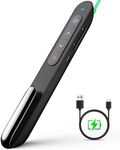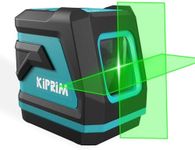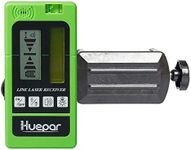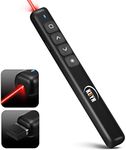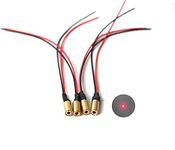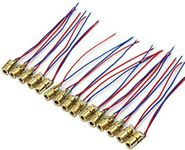Buying Guide for the Best Laser Bore Sighters
Choosing the right laser bore sighter is crucial for anyone looking to improve their shooting accuracy and save time and ammunition during the sighting process. A laser bore sighter helps align your firearm's sights or scope with the barrel, ensuring that your shots are on target. When selecting a laser bore sighter, it's important to consider several key specifications that will determine its compatibility with your firearm and its overall effectiveness. Understanding these specifications will help you make an informed decision and choose a product that best fits your needs.Caliber CompatibilityCaliber compatibility refers to the range of firearm calibers that a laser bore sighter can be used with. This is important because using a bore sighter that is not compatible with your firearm's caliber can result in inaccurate sighting. Bore sighters are often designed for specific calibers or a range of calibers. Some are universal and come with adapters for different calibers, while others are specific to a single caliber. To choose the right one, consider the firearms you own or plan to sight in and ensure the bore sighter is compatible with those calibers.
Laser ColorLaser color typically refers to the color of the laser beam emitted by the bore sighter, usually red or green. This is important because different colors can be more visible under different lighting conditions. Red lasers are common and work well in low-light conditions, while green lasers are more visible in daylight and at longer distances. If you plan to sight in your firearm in various lighting conditions, a green laser might be more versatile. However, if you primarily work in controlled or low-light environments, a red laser could suffice.
Battery LifeBattery life indicates how long the laser bore sighter can operate before needing a battery replacement. This is important for convenience and cost-effectiveness, as frequent battery changes can be cumbersome and expensive. Battery life can vary significantly between models, with some offering just a few hours of use and others lasting much longer. Consider how often you plan to use the bore sighter and in what settings. If you expect to use it frequently or for extended periods, look for a model with a longer battery life.
Construction QualityConstruction quality refers to the materials and build of the laser bore sighter. This is important for durability and reliability, especially if you plan to use the bore sighter in rugged conditions. High-quality materials like aluminum or brass can withstand more wear and tear compared to plastic. Consider where and how you will use the bore sighter. If you need something robust for outdoor use, opt for a model with a sturdy construction. For occasional indoor use, a less rugged model might be sufficient.
Ease of UseEase of use refers to how simple it is to operate the laser bore sighter. This is important for efficiency and user experience, especially for beginners. Some models are straightforward and require minimal setup, while others might have more complex features or require additional tools. Consider your level of experience and how comfortable you are with technical setups. If you prefer a hassle-free experience, look for a model that is known for its simplicity and user-friendly design.

